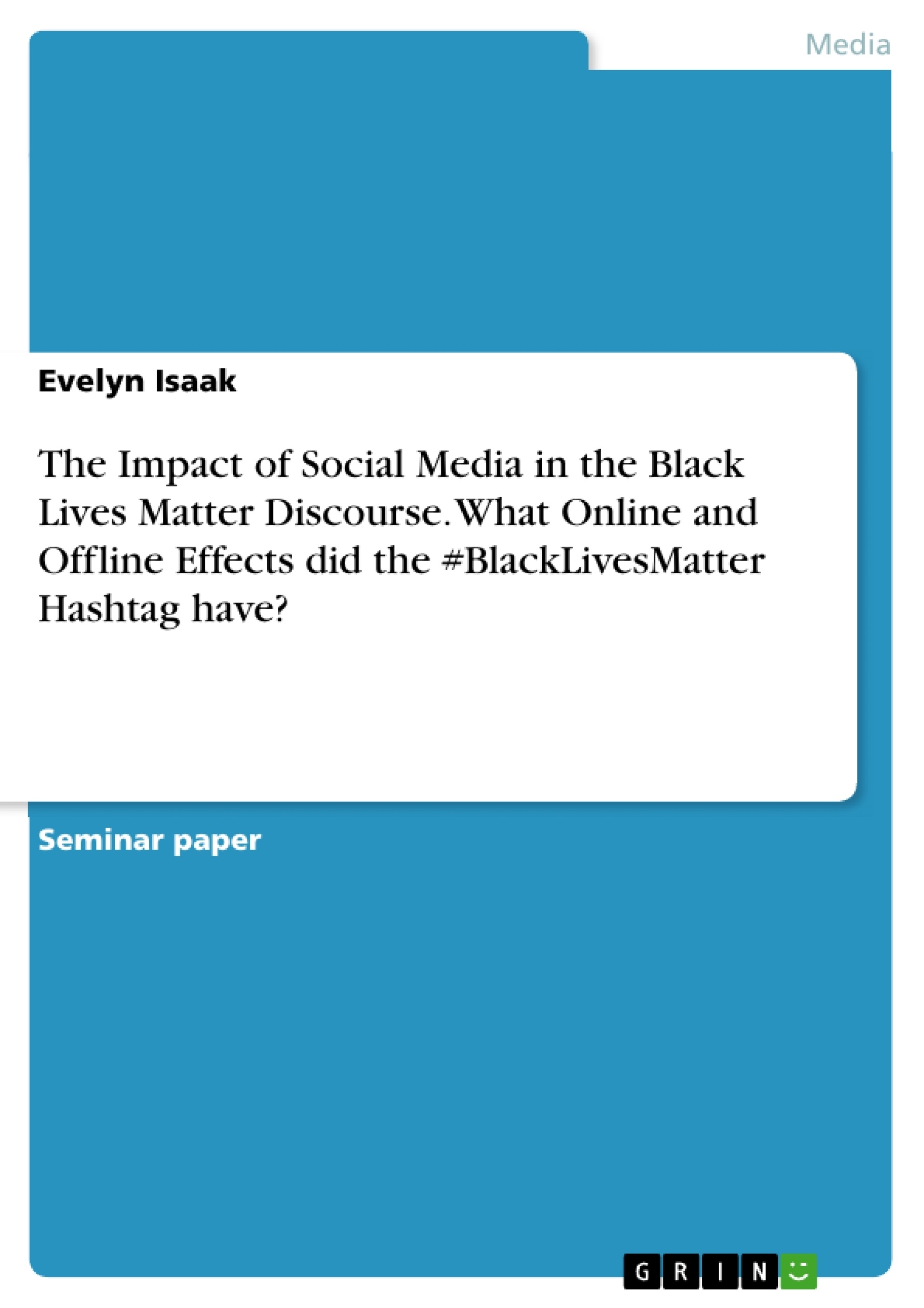This paper explores the impact of social media, especially Instagram and Twitter, on the discourse surrounding the BLM movement. The focus will mainly be on the framing of the crisis of racial inequality in the United States. Main questions are: Can the movement be seen as resulting out of a crisis, and why is the #BlackLivesMatter hashtag still important? What online and offline effects did the #BlackLivesMatter hashtag have? Through an examination of how social media has been used to frame the crisis, this paper tries to explain the ways in which this new media has been used to mobilize support, build community, and challenge the status quo.
The United States of America has long grappled with systemic racial inequality and social injustice, particularly towards black Americans. The racial inequality began many years ago and continues until this day. Despite historic efforts towards achieving civil rights, the plight of black people in America has continued to be a contentious issue, with police brutality and discriminatory policies remaining persistent problems. In recent years, the Black Lives Matter (BLM) movement has emerged as a powerful force for change, driven largely by the use of social media platforms to bring awareness to the issue of systemic racism and its impact on Black lives.
Table of Contents
- Introduction
- The #BlackLivesMatter hashtag: Defining the Crisis
- Analyzing social media cases and the individuals behind them
- Different poles: Focus on counter-movements and the effect of the #AllLivesMatter hashtag
- The offline global effects of the Black Lives Matter movement
- Conclusion
Objectives and Key Themes
This paper investigates the role of social media, particularly Instagram and Twitter, in shaping the discourse surrounding the Black Lives Matter movement, focusing on the framing of the crisis of racial inequality in the United States. The paper examines how social media has been utilized to mobilize support, build community, and challenge the status quo. It analyzes the significance of the #BlackLivesMatter hashtag, explores its origins and counter-movements, and examines its offline global effects.
- The historical context of systemic racism and discrimination against Black Americans
- The role of social media in framing the crisis of racial inequality
- The impact of the #BlackLivesMatter hashtag and its counter-movements
- The offline consequences and global effects of the Black Lives Matter movement
- The dynamics of police brutality and its connection to racial bias
Chapter Summaries
- Introduction: This chapter introduces the topic of systemic racial inequality and social injustice in the United States, specifically focusing on the Black community. It establishes the context for the Black Lives Matter movement and its use of social media to raise awareness about systemic racism.
- The #BlackLivesMatter hashtag: Defining the Crisis: This chapter delves into the history of systemic oppression and discrimination faced by African Americans in the United States. It examines the historical context, from slavery to debt peonage and police misconduct, highlighting the enduring impact on the Black community. The chapter explores how these historical injustices have contributed to the current crisis of racial inequality and the need for the #BlackLivesMatter movement.
Keywords
The key themes and concepts explored in this paper include systemic racism, police brutality, social media activism, the #BlackLivesMatter movement, counter-movements, online discourse, offline effects, and the framing of the crisis of racial inequality.
- Quote paper
- Evelyn Isaak (Author), 2023, The Impact of Social Media in the Black Lives Matter Discourse. What Online and Offline Effects did the #BlackLivesMatter Hashtag have?, Munich, GRIN Verlag, https://www.grin.com/document/1389683




